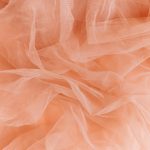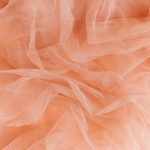When choosing between gauze and cheesecloth, know that gauze is a finer, softer fabric ideal for delicate tasks like wrapping fish or straining yogurt, thanks to its tighter weave and gentle texture. Cheesecloth, with its looser weave and sturdier feel, excels at straining stocks, bundling herbs, and handling heavier kitchen jobs. Both are breathable and absorbent but suit different culinary needs. If you want to master their uses and care, keep exploring how each fabric performs in various settings.
Table of Contents
Key Takeaways
- Gauze has a finer, tighter weave and softer texture, ideal for delicate straining and medical uses, while cheesecloth is coarser and more durable for heavy-duty tasks.
- Cheesecloth is best for culinary tasks like straining stocks, bundling herbs, and dusting, offering better absorbency and airflow than gauze.
- Gauze excels in wrapping and steaming delicate foods, and gentle whey drainage in cheese or yogurt making due to its smooth texture.
- Choose gauze for fine particle straining and softness, and cheesecloth for sturdiness, higher absorbency, and versatile kitchen applications.
- Proper care involves thorough rinsing, gentle washing, air drying, and keeping separate cloths for culinary and non-culinary uses to prevent cross-contamination.
Understanding the Fabric: What Is Gauze?
Gauze is a lightweight, loosely woven fabric that you’ll often find in medical and culinary settings.
When you handle gauze, you’ll notice its soft texture and breathability, which make it perfect for wound dressings. You’ll appreciate how easily it absorbs moisture, helping to keep injuries clean and dry.
In medical environments, gauze acts as a protective barrier while allowing air to circulate, promoting faster healing. You’ll also see it in bandages and surgical sponges due to its gentle touch on sensitive skin.
While gauze is thin, it’s durable enough to hold its shape during use. When you need a fabric that’s both absorbent and gentle, gauze is your reliable go-to, especially for first aid and medical care.
Exploring Cheesecloth: Characteristics and Uses
While both gauze and cheesecloth share a lightweight, loosely woven structure, cheesecloth offers a different texture and set of uses you might find handy.
Cheesecloth is typically made from cotton and comes in various grades, affecting its openness and durability. You’ll find it excellent for culinary tasks like straining stocks, making cheese, and bundling herbs thanks to its breathability and strength.
Cheesecloth’s cotton weave and different grades make it ideal for straining, cheese making, and bundling herbs.
Beyond the kitchen, you can use cheesecloth in crafts, polishing, and even gardening to protect plants from pests. Its versatility makes it a practical fabric to keep around.
When you need a breathable, absorbent material that holds up under gentle pressure without tearing easily, cheesecloth often fits the bill perfectly, adapting to a range of tasks you might encounter daily.
Weave and Texture Differences Between Gauze and Cheesecloth
When you compare gauze and cheesecloth, you’ll notice key differences in thread count and material thickness.
Gauze typically has a tighter weave with more threads per inch, making it finer and softer.
Cheesecloth, on the other hand, has a looser weave and thicker fibers, giving it a coarser texture.
Thread Count Variations
Because thread count directly affects the fabric’s texture and strength, you’ll notice clear differences between gauze and cheesecloth. Gauze typically has a lower thread count, making it more loosely woven and softer, while cheesecloth has a higher thread count, resulting in a denser and sturdier fabric. This distinction influences their suitability for various tasks, from delicate medical uses to straining and wrapping in cooking.
| Fabric | Typical Thread Count | Texture Impact |
|---|---|---|
| Gauze | 30-60 | Lightweight, airy |
| Cheesecloth | 40-80 | Denser, more durable |
| Variants | Varies widely | Adjusted for purpose |
Understanding these variations helps you pick the right fabric for your needs efficiently.
Material Thickness Comparison
The thread count differences between gauze and cheesecloth also affect their material thickness and texture.
Gauze typically has a finer weave with a higher thread count, making it thinner and softer to the touch. If you need a delicate fabric that’s gentle on skin or suitable for medical use, gauze is your best bet.
Cheesecloth, on the other hand, has a coarser weave and a lower thread count, resulting in a thicker, more open texture. This makes it ideal when you want more airflow or drainage, like straining stocks or wrapping cheese.
When choosing between the two, consider how much thickness and texture you need—gauze offers lightness and smoothness, while cheesecloth provides durability and breathability.
Common Culinary Applications for Gauze
You’ll find gauze essential for several culinary tasks, especially those requiring fine filtration or delicate wrapping. Its thin, tightly woven texture makes it perfect when you need to strain liquids or encase ingredients gently.
Here are some common ways you can use gauze in the kitchen:
- Straining stocks, broths, and sauces for a clear, smooth finish
- Wrapping herbs and spices into a bouquet garni for easy removal
- Filtering homemade nut milk or juices to remove fine pulp
- Covering dough during fermentation to protect without suffocating
- Bundling delicate foods like cheese or tofu for pressing or marinating
Gauze’s fine weave guarantees you capture unwanted particles without sacrificing flavor or texture. It’s a versatile tool for precision cooking tasks.
Typical Uses of Cheesecloth in Cooking
Cheesecloth serves as a versatile kitchen staple, especially when tasks call for a loosely woven fabric that allows more airflow and drainage than gauze.
You’ll often use it for straining stocks, broths, or homemade nut milks, where you want to separate liquid from solids without trapping too much moisture. It’s perfect for bundling herbs and spices into a bouquet garni, so you can infuse flavor without losing bits in your dish.
When making cheese, it helps you drain whey gently while keeping curds intact. You can also wrap delicate foods for poaching or use it to dust powdered sugar evenly over pastries.
Gauze and Cheesecloth in Craft and Medical Settings
While cheesecloth shines in the kitchen, both gauze and cheesecloth find important roles beyond cooking, especially in craft and medical settings.
When you’re crafting, cheesecloth’s loose weave makes it perfect for texture and layering effects. Gauze, with its finer weave, excels in medical use for wound care, allowing breathability while protecting injuries.
You’ll also find cheesecloth useful for:
- Creating textured backgrounds in art projects
- Wrapping herbs or potpourri for sachets
- Filtering paint or dye in crafts
- Acting as a breathable cover for fermenting foods
- Serving as a gentle bandage or dressing in first aid
Understanding these uses helps you pick the right fabric for your specific needs outside the kitchen.
Choosing the Right Fabric for Your Kitchen Needs
When picking fabric for your kitchen, you’ll want to contemplate texture, absorbency, and durability.
Gauze offers a softer feel, while cheesecloth tends to be sturdier and more absorbent.
Understanding these qualities helps you choose the best fabric for tasks like straining, wrapping, or simmering.
Fabric Texture Comparison
Several factors influence how each fabric performs in the kitchen, but texture plays an essential role in determining which one suits your needs best.
When you compare gauze and cheesecloth, their textures directly impact how they handle food preparation tasks.
- Gauze feels soft and loosely woven, making it gentle on delicate foods.
- Cheesecloth has a coarser, more open weave, allowing better airflow.
- Gauze’s smooth texture is ideal for straining fine particles.
- Cheesecloth’s rougher texture works well for bundling herbs or making cheese.
- The texture affects how easily you can manipulate the fabric around ingredients.
Absorbency and Durability
Because you rely on kitchen fabrics to handle liquids and withstand repeated use, absorbency and durability become essential factors in your choice between gauze and cheesecloth.
Cheesecloth tends to be more absorbent due to its loose weave, which allows it to soak up liquids quickly—perfect when you need to strain or wrap foods without trapping moisture.
Gauze, on the other hand, typically features a tighter weave, offering moderate absorbency but greater durability. It holds up better through multiple washes and resists tearing, making it ideal if you plan to reuse your fabric.
When deciding, consider how much liquid you’ll be managing and how often you want to use the fabric. This way, you’ll pick the one that balances absorbency and strength to fit your kitchen tasks perfectly.
Best Culinary Applications
Understanding the absorbency and durability of gauze and cheesecloth helps you decide which fabric suits specific kitchen tasks.
Cheesecloth’s loose weave makes it ideal for straining liquids, while gauze’s finer texture works well for delicate tasks.
Here’s when to pick each:
- Use cheesecloth to strain stocks, broths, and homemade nut milk for easy liquid separation.
- Wrap herbs and spices in cheesecloth to create bouquet garni for flavor-infused dishes.
- Choose gauze for wrapping and steaming delicate foods like fish or dumplings, preventing tearing.
- Use gauze when making cheese or yogurt to drain whey gently without losing curds.
- Employ cheesecloth for dusting powdered sugar or sifting flour in baking prep.
Tips for Proper Care and Storage of Gauze and Cheesecloth
When you want to keep your gauze and cheesecloth in good condition, proper care and storage are essential.
After using them, rinse thoroughly with cold water to remove residues. Avoid harsh detergents; a mild soap works best to preserve the fibers.
Let them air dry completely before storing to prevent mildew. Fold your cloths neatly and store them in a clean, dry place away from direct sunlight, which can weaken the material over time.
If you use gauze or cheesecloth frequently, consider keeping separate bundles for cooking and medical or craft uses to avoid cross-contamination.
Frequently Asked Questions
Can Gauze or Cheesecloth Be Dyed for Craft Projects?
Imagine dipping soft fabric into vibrant paint—yes, you can dye both gauze and cheesecloth for your craft projects. They’ll soak up colors beautifully, giving you delicate, textured materials perfect for creative designs.
Are Gauze and Cheesecloth Biodegradable and Eco-Friendly?
You’ll find that both gauze and cheesecloth are biodegradable since they’re made from natural fibers like cotton. They break down easily and are eco-friendly, making them great choices if you want to reduce environmental impact.
Can Cheesecloth or Gauze Be Safely Used in Baby Care?
You can safely use gauze or cheesecloth in baby care, but make sure they’re clean, sterile, and free from harsh chemicals. Always supervise to avoid choking hazards, and consult your pediatrician for specific uses or concerns.
Is There a Difference in Price Between Gauze and Cheesecloth?
Imagine picking fabric off a store shelf—gauze usually costs a bit more due to medical-grade quality, while cheesecloth is cheaper and coarser. You’ll find gauze pricier, but it’s worth it for delicate tasks.
How Do Gauze and Cheesecloth Perform in Outdoor Food Preparation?
You’ll find gauze holds up better outdoors, resisting tearing during food prep, while cheesecloth’s looser weave lets air flow but can snag easily. So, choose gauze for durability and cheesecloth for straining or wrapping delicate items.
- Understanding Thermal Bonding in Nonwoven Fabric Manufacturing - July 11, 2025
- Can Nonwoven Fabric Be Used for Upholstery? - July 11, 2025
- The Complete Guide to Nonwoven Polypropylene Tote Bags - July 11, 2025







